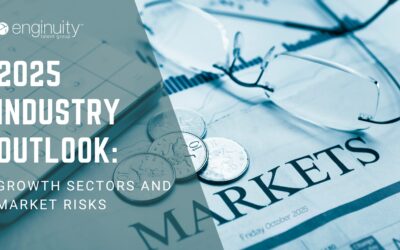The Hidden Costs of a Bad Hire: How to Avoid Expensive Mistakes
Hiring the right talent is essential for business growth, but the cost of hiring the wrong person can be staggering. While most organizations focus on the immediate costs of recruitment, the hidden expenses associated with a bad hire can cripple budgets, damage morale, and even impact the reputation of a business. This comprehensive guide delves into the financial, operational, and cultural costs of a poor hiring decision and provides actionable strategies to avoid making expensive mistakes.
The True Cost of a Bad Hire
Many businesses underestimate the overall impact of hiring the wrong person. The financial implications, from recruitment fees to severance packages, are just the tip of the iceberg. More insidious are the hidden costs, including lost productivity, decreased employee morale, and damage to a company’s reputation. For example, a poorly performing employee can disrupt workflows, miss critical deadlines, and require significant oversight from managers, detracting from strategic initiatives.
Real-world examples illustrate these points vividly. Consider a mid-sized company that hired an unqualified sales executive. Within six months, the company’s revenue dropped by 15%, due to failed deals and client dissatisfaction. This single misstep led to overworked colleagues, strained client relationships, and an urgent need for damage control. Another case involves a tech startup that hired an unvetted software engineer whose errors caused costly glitches, delaying product launches and eroding customer trust.
Prevention is the best defense against these pitfalls. A robust hiring process ensures that only the most qualified and culturally aligned candidates join the team, mitigating risks before they arise.
Financial Implications of Poor Hiring Decisions
The financial fallout of a bad hire is both immediate and long-lasting. Recruitment costs alone can be daunting—from advertising job openings to conducting multiple rounds of interviews. Once the hire is made, onboarding expenses and training investments add up, particularly for roles requiring specialized skills.
When a bad hire underperforms, the ripple effects can be devastating. Project delays, missed revenue opportunities, and lost productivity become common. For example, a marketing team forced to pause a campaign due to the incompetence of a new member may see significant revenue losses. Additionally, turnover costs—including severance packages and the expense of replacing the employee—often exceed 50% of the bad hire’s annual salary, with specialized roles reaching up to 200%.
To minimize these risks, companies must adopt precise hiring strategies that focus on skills, experience, and cultural alignment. Investing in thorough screening and evaluation processes can prevent these avoidable financial drains.
Operational Disruptions and Productivity Losses
The operational impact of a bad hire extends beyond monetary losses. When a poorly performing employee struggles to meet expectations, their responsibilities often shift to other team members. This creates a bottleneck that slows down productivity and generates resentment among colleagues. As frustration mounts, team cohesion deteriorates, leading to a decline in overall performance.
Managers often bear the brunt of addressing these disruptions. Time that could be spent on strategic planning or innovation is instead diverted to managing performance issues, providing remedial training, or resolving conflicts. Over time, these inefficiencies erode a company’s ability to compete in its industry.
The repercussions of operational disruptions can also reach clients. Missed deadlines, subpar deliverables, and communication breakdowns undermine customer trust and loyalty. Negative experiences are often shared publicly, tarnishing the company’s reputation and deterring potential clients.
Cultural and Team Dynamics Challenges
The effects of a bad hire on workplace culture are profound. High-performing employees may feel undervalued or demoralized when forced to compensate for a colleague’s shortcomings. Over time, this can lead to disengagement, burnout, and increased turnover among top talent.
Trust is another casualty of poor hiring decisions. Employees may begin to question management’s judgment, eroding confidence in leadership. Rebuilding this trust often requires a transparent commitment to improving hiring practices and addressing team concerns.
Toxic behaviors from a bad hire, such as negativity or poor communication, can exacerbate these issues. These behaviors often spread, creating a ripple effect that disrupts team cohesion and productivity. Cultivating a positive workplace culture hinges on proactive efforts to identify and address such challenges.
Strengthening the Recruitment Process
Building a more effective hiring process starts with clarity. Clearly defined job descriptions that outline responsibilities, qualifications, and cultural expectations set the foundation for attracting the right candidates. Behavioral interviews that focus on past experiences and problem-solving abilities provide deeper insights into a candidate’s potential fit within the organization.
Reference checks are another critical component. Thoroughly vetting a candidate’s work history and speaking with former colleagues can uncover valuable information about their strengths and weaknesses. Additionally, leveraging pre-employment assessments to evaluate skills and cognitive abilities ensures that candidates possess the competencies required for success.
Investing in a strategic, comprehensive recruitment process pays dividends by reducing the likelihood of costly hiring mistakes. By focusing on precision, companies can secure talent that aligns with both their immediate needs and long-term goals.
The Role of Technology in Smarter Hiring
Technological advancements have transformed the hiring landscape. Applicant tracking systems (ATS) streamline resume screening, allowing recruiters to focus on the most promising candidates. AI-driven tools can assess cultural fit, predict future performance, and identify red flags based on data patterns.
Predictive analytics is a particularly valuable tool. By analyzing historical data, companies can make evidence-based decisions about a candidate’s potential success. Gamification and interactive assessments further enhance the evaluation process, offering engaging ways to measure skills and problem-solving abilities.
The integration of technology not only improves the efficiency of hiring but also minimizes the risks associated with human error. By adopting these tools, organizations can make informed decisions that align with their strategic objectives.
Employer Branding: Attracting the Right Talent
A strong employer brand is crucial for attracting top-tier candidates. Companies that effectively communicate their values, culture, and employee success stories differentiate themselves in a competitive job market. Transparency in job descriptions and company policies builds trust, encouraging high-quality candidates to apply.
Social media, employee testimonials, and company blogs are powerful tools for showcasing a positive workplace culture. By highlighting achievements and celebrating employee milestones, businesses can foster pride and loyalty among their workforce. A well-crafted employer brand not only attracts better candidates but also reduces turnover, creating a more stable and engaged team.
Continuous Development: Mitigating Risks Post-Hire
Even the most thorough hiring processes cannot eliminate all risks. To address this, companies should invest in continuous training and development. Providing employees with opportunities to enhance their skills ensures they remain productive and aligned with organizational goals.
Creating a culture of learning encourages adaptability and resilience. Mentorship programs, for example, can accelerate onboarding and foster a sense of belonging. By pairing new hires with experienced team members, organizations can bridge skill gaps and strengthen team cohesion.
Ongoing development initiatives not only improve individual performance but also contribute to overall organizational success. By prioritizing employee growth, companies can mitigate the risks of mismatched hires and build a more resilient workforce.
Subtle Lessons in Strategic Hiring
Effective hiring is as much an art as it is a science. Subtle insights from successful hiring models emphasize the importance of aligning recruitment strategies with organizational goals. Leveraging data-driven approaches, such as predictive analytics and behavioral assessments, enhances decision-making and reduces the risk of costly errors.
By fostering a culture of continuous improvement in recruitment practices, companies can create a pipeline of talent that drives long-term success. Investing in precision, transparency, and development ensures that each new hire contributes to a thriving workplace.
Turning Risks into Opportunities
The hidden costs of a bad hire extend far beyond immediate expenses, touching every aspect of an organization’s operations and culture. However, these challenges also present opportunities for growth and improvement. By refining recruitment strategies, leveraging technology, and prioritizing continuous development, businesses can transform their hiring processes into a strategic advantage.
In today’s competitive landscape, the value of strategic hiring cannot be overstated. Investing in the right people not only drives innovation and productivity but also strengthens the foundation for sustainable success. By taking proactive steps to mitigate the risks of a bad hire, organizations can build resilient teams that thrive in any environment.







0 Comments